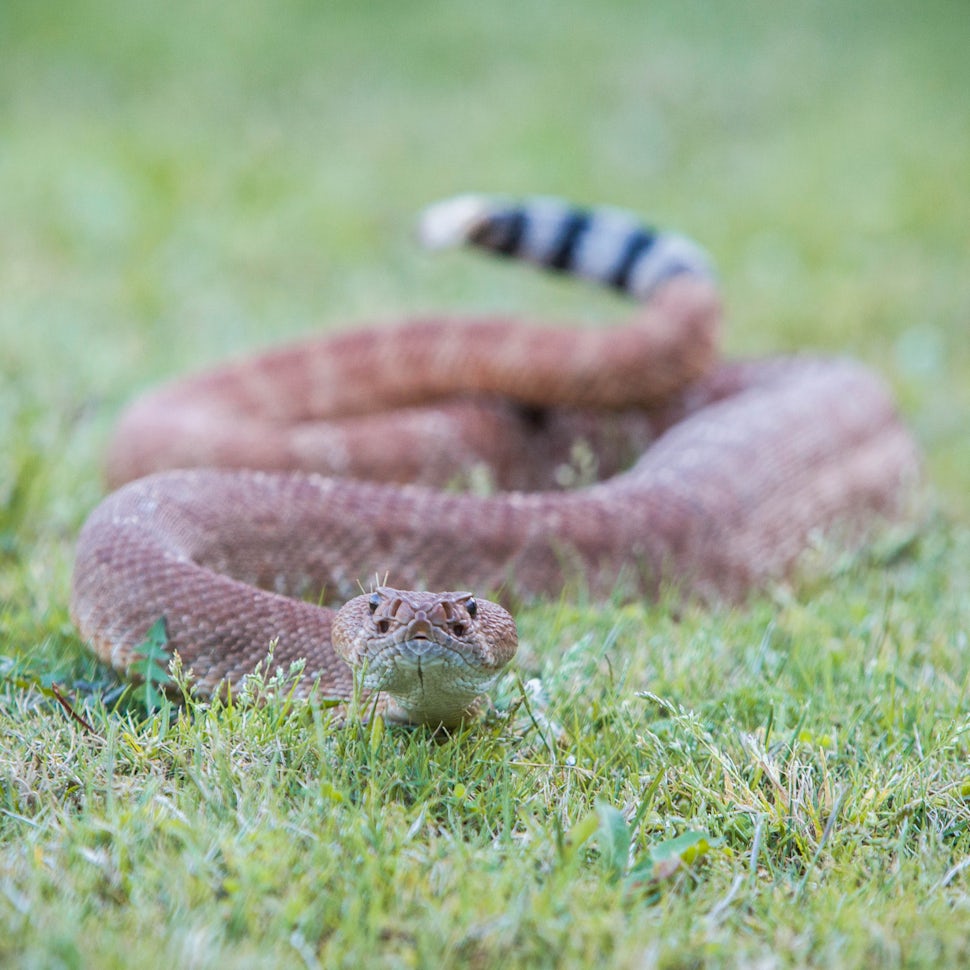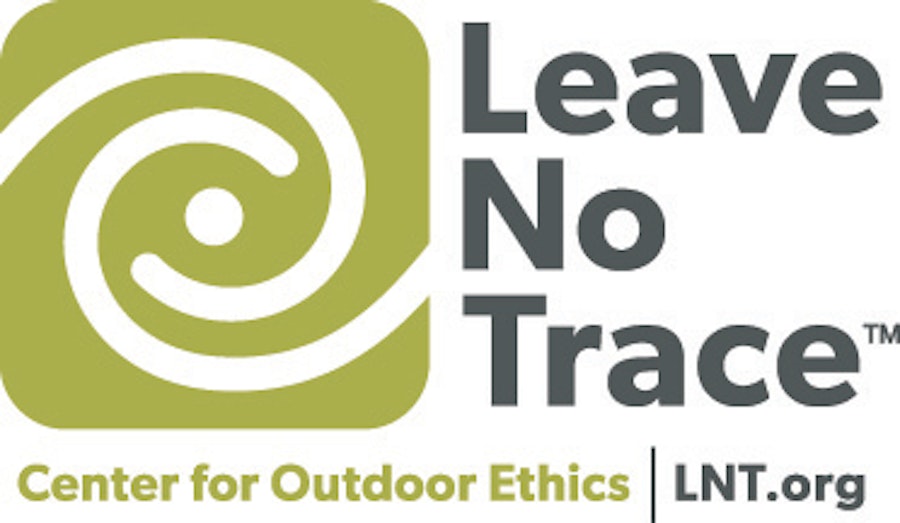Snakes On A Trail: 5 Tips For Dealing With Snakes While Hiking
You'll be glad you read this.

Snakes are just one of many species that call the wild places we love home. Understanding these critters and being able to manage an encounter with one is an important way to mitigate human-wildlife conflict and to keep everyone involved safe. Here are a few guidelines to make your outdoor adventures snake-friendly.

1. First of all, what is it?
Just like checking weather conditions beforehand or making sure we’ve packed enough water, knowing what wildlife you may encounter outdoors is an important step to being prepared. Your hike may be through great snake habitat, and the snakes you encounter could be venomous or non-venomous. In the United States, venomous snake species include rattlesnakes, copperheads, water moccasins, and coral snakes. Contrary to popular belief, color and head shape are not reliable indicators of whether a snake is venomous. Prior to your adventure, check with your state or national park ranger or local biologist to find out what species you may encounter - relying on the internet to identify a species is generally not accurate. Having a good field guide may also be helpful. I recommend the Peterson Field Guides to Reptiles and Amphibians - there is an eastern and western version for North America, and they fit right into your day pack. Having a regionally appropriate field guide is more helpful than guessing what species your snake is!

2. Where are you likely to encounter a snake?
While the obvious answer may be “anywhere,” knowing a little bit about snake ecology helps take the guesswork out of where you could potentially encounter an animal. Because snakes are ectotherms, they depend on external sources for heat. This is why you’re likely to find a snake stretched across a trail in the early morning or evening - he or she is just gathering energy for the day! During the hottest part of the day, snakes seek shelter from the sun like we do, and you may find them resting under rocks and limbs. Depending on the species, you may be more likely to find snakes nestled in rocky crevices, in leaf litter or debris, on the edge of streams and creeks, or in tree canopies. Snakes may travel via ravines, riparian corridors, or trails in order to meet their resource needs. Regardless of whether they huff, hiss, or rattle, the snake is always more scared of you than you are of it- remember, you are bigger, warmer, and smarter! When faced with a predator, many snake species will flee, but if they coil up in an S shape, rattle, or writhe around, they are scared and are telling you to leave them alone! Some species will even play dead, like the hognose snake. Your best bet on or off the trail is to be mindful of where you put your hands and feet, as not all snakes make a warning sound. If you cannot clearly see a ledge or are stepping into tall brush, take a moment to pause and look around before continuing onward.
3. Responding to a snake on the trail
Even when you’ve done everything possible to prevent a snake encounter, there is still the possibility of bumping into one - after all, your hike is in their territory! If you see a snake, the first thing you want to do is to give the animal some space. Second, if you can, determine the species of the snake (using that handy field guide). Regardless of whether the animal is venomous or nonvenomous, you’ll want to treat it the same way: leave it alone. That’s right- don’t touch the snake! Most snake bites occur when people try to move or kill a snake. The closer you get, the more likely you are to suffer a bite. Fortunately, the venomous snake species in the United States very rarely pose fatal threats to humans, which means there is absolutely no need to harm a snake on the trail, venomous or not (according to the Center for Disease Control, of the 7-8,000 people in the US bitten by snakes, only 5 will die). Moving around the snake, even if in the middle of the trail, is your best option.

4. What to do if you are bitten
Fortunately, there are far more nonvenomous than venomous species in the US. However, what do you do if you are bitten by a snake? Don’t panic. Try to remain calm, identify the species if possible, and plan your next move accordingly. In general, you are not in danger from a nonvenomous snake bite- your greatest concern will be the secondary infection you could get from the bite (in which case you should thoroughly wash the area with soap and water, or use alcohol wipes and neosporin from your first aid kit). However, if you are bitten by a venomous species, do not make a tourniquet- this can cause nerve damage to the limb from reducing blood flow. Do not try to suck out the venom- it doesn’t work and you are just putting the venom into a different part of your body. Do not cut yourself at the bite site to increase blood flow- this also doesn’t work. What to do instead: if you can see the snake, be sure to back away from it to avoid another bite. Identify the species if possible (if you cannot do this reliably, take note of markings), as this may assist with medical care. Take note of the time of the bite. Remain calm (keeping your heart rate down may slow the spread of venom), return to your vehicle as soon as possible, and drive to the nearest hospital. Calling ahead to inquire about snake antivenin may also be helpful, as not all hospitals may be equipped to treat a venomous snake bite. Remember: don’t panic! While a snake bite from a venomous species is scary and painful, your chances of it being fatal are low.
5. Appreciate the experience (bites not included!)
While a lot of people don’t like snakes, they are important members of complex ecosystems. Seeing a snake in its natural habitat is a rewarding experience- snakes come in an array of colors and many are strikingly beautiful. If you’ve got a good camera, you can take a moment to get some photos (from a reasonable distance!) or simply be in the moment and observe what the animal is doing. Being snake-safe is just as important for you as it is to the snake, so instead of being nervous or fearful, be prepared and focus on the cool experience of seeing wildlife!

Cover photo: Ryan Mckinney
Don't see your favorite adventure on The Outbound? Show us by creating an adventure.
Please respect the places you find on The Outbound.
Always practice Leave No Trace ethics on your adventures. Be aware of local regulations and don't damage these amazing places for the sake of a photograph. Learn More
We want to acknowledge and thank the past, present, and future generations of all Native Nations and Indigenous Peoples whose ancestral lands we travel, explore, and play on. Always practice Leave No Trace ethics on your adventures and follow local regulations. Please explore responsibly!
Do you love the outdoors?
Yep, us too. That's why we send you the best local adventures, stories, and expert advice, right to your inbox.








